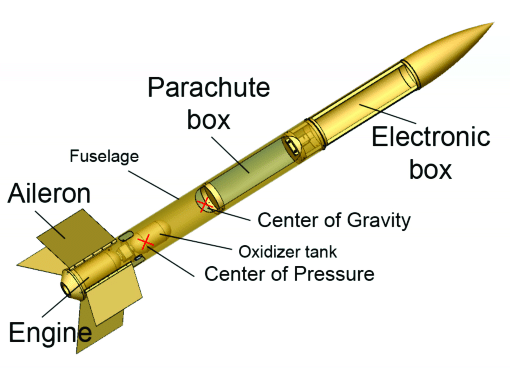Difference between satellite and rocket: In the realm of space exploration, satellites and rockets play pivotal roles. While they often work in tandem to achieve the broader objectives of space missions, their functionalities, structures, and purposes are distinct. Understanding the differences between these two marvels of technology is crucial for anyone interested in the science of space.
Definition and Function of Satellites
Satellites are objects that orbit planets or other celestial bodies. There are two primary types of satellites: natural (like moons) and artificial. Artificial satellites are man-made and serve various purposes, including communication, weather monitoring, navigation, and scientific research.
Types of Artificial Satellites
- Communication Satellites: These satellites facilitate telecommunication, including television, radio, internet, and telephone services. They orbit the Earth in geostationary orbit, ensuring constant coverage over specific areas.
- Weather Satellites: Positioned in geostationary and polar orbits, these satellites monitor the Earth’s climate and weather patterns, providing essential data for weather forecasting and climate research.
- Navigation Satellites: Part of systems like GPS, GLONASS, and Galileo, these satellites help in pinpointing exact locations on the Earth’s surface, essential for navigation in aviation, maritime, and everyday use.
- Scientific Satellites: These satellites conduct scientific experiments and observations, studying space, the Earth’s atmosphere, and other celestial phenomena.

Components of a Satellite
- Power Source: Typically solar panels or batteries.
- Transponder: Receives and transmits signals.
- Antenna: Communicates with ground stations.
- Payload: The specific instruments or equipment tailored for the satellite’s mission.
- Propulsion System: Used for adjusting the satellite’s orbit and position.
Definition and Function of Rockets
Rockets are vehicles designed to launch payloads into space. They operate on the principle of Newton’s Third Law of Motion: for every action, there is an equal and opposite reaction. Rockets are essential for transporting satellites, space probes, and human missions into space.
Types of Rockets
- Expendable Launch Vehicles (ELVs): These rockets are used only once. After delivering their payload, they fall back to Earth or burn up in the atmosphere. Examples include the Atlas V and Ariane 5.
- Reusable Launch Vehicles (RLVs): Designed to be used multiple times, these rockets reduce the cost of space missions. The SpaceX Falcon 9 and Blue Origin’s New Shepard are notable examples.
- Sounding Rockets: Smaller rockets used for suborbital flights to conduct scientific experiments and observations.
Components of a Rocket

- Propellant: The fuel and oxidizer combination that produces thrust.
- Rocket Engine: Converts the chemical energy of the propellant into kinetic energy.
- Payload: The cargo being transported, which could be a satellite, scientific instruments, or crew.
- Stages: Many rockets are multi-staged, with each stage providing thrust at different phases of the flight.
Key Difference between satellite and rocket
Let’s compare rockets and satellites in a concise table format:
| Aspect | Rocket | Satellite |
|---|---|---|
| Definition | A vehicle designed for space travel or flight | An object, natural or artificial, in orbit around celestial bodies like planets |
| Purpose | To carry payloads (including satellites) | To perform tasks like communication, monitoring, or scientific research |
| Construction | Built to withstand pressure, heat, and force | Designed to operate and endure extreme conditions of space |
| Lifespan | Typically used once; advancements in reusability | Can operate for many years after being deployed |
| Dependency | Operates independently during launch | Often launched and placed into orbit by rockets |
Rockets are primarily launch vehicles powered by engines that burn fuel to create thrust, propelling them through the atmosphere into space. Satellites, on the other hand, serve various purposes and can be natural (like moons) or artificial, designed for communication, weather monitoring, or scientific tasks.
Purpose and Functionality
The primary difference between satellites and rockets lies in their purposes. Satellites are designed to orbit celestial bodies and carry out specific missions, such as communication, weather monitoring, and scientific research. In contrast, rockets are vehicles designed to transport these satellites (or other payloads) into space.
Operation and Lifespan
Satellites, once placed in their designated orbits, can function for years, even decades, depending on their mission and design. They continuously gather and transmit data. Rockets, however, have a short operational lifespan, primarily during the launch phase. Once their payload is delivered, expendable rockets are discarded, while reusable rockets are refurbished for future missions.
Structural Design
Satellites are equipped with instruments tailored to their specific missions, such as antennas, transponders, and solar panels. They are designed to operate in the vacuum of space. Rockets, on the other hand, are built to withstand the intense conditions of launch, including extreme pressure, temperature, and vibration. They house powerful engines and a series of stages to achieve the velocity required to reach space.
Technological Complexity
Both satellites and rockets are technologically advanced, but in different ways. Satellites must be highly reliable and autonomous, as they often operate far from human intervention. Their technology focuses on precision instruments for data collection and transmission. Rockets require complex propulsion systems, structural integrity, and precise engineering to ensure they can successfully deliver their payloads to the intended orbits.
In summary, while satellites and rockets are both crucial to space exploration and technology, they serve distinctly different roles. Satellites are sophisticated devices that remain in space to perform various functions, while rockets are powerful vehicles designed to transport these satellites (and other payloads) into their operational orbits. Understanding the differences between these two is fundamental for appreciating the intricacies of space missions and the advancements in aerospace technology.





